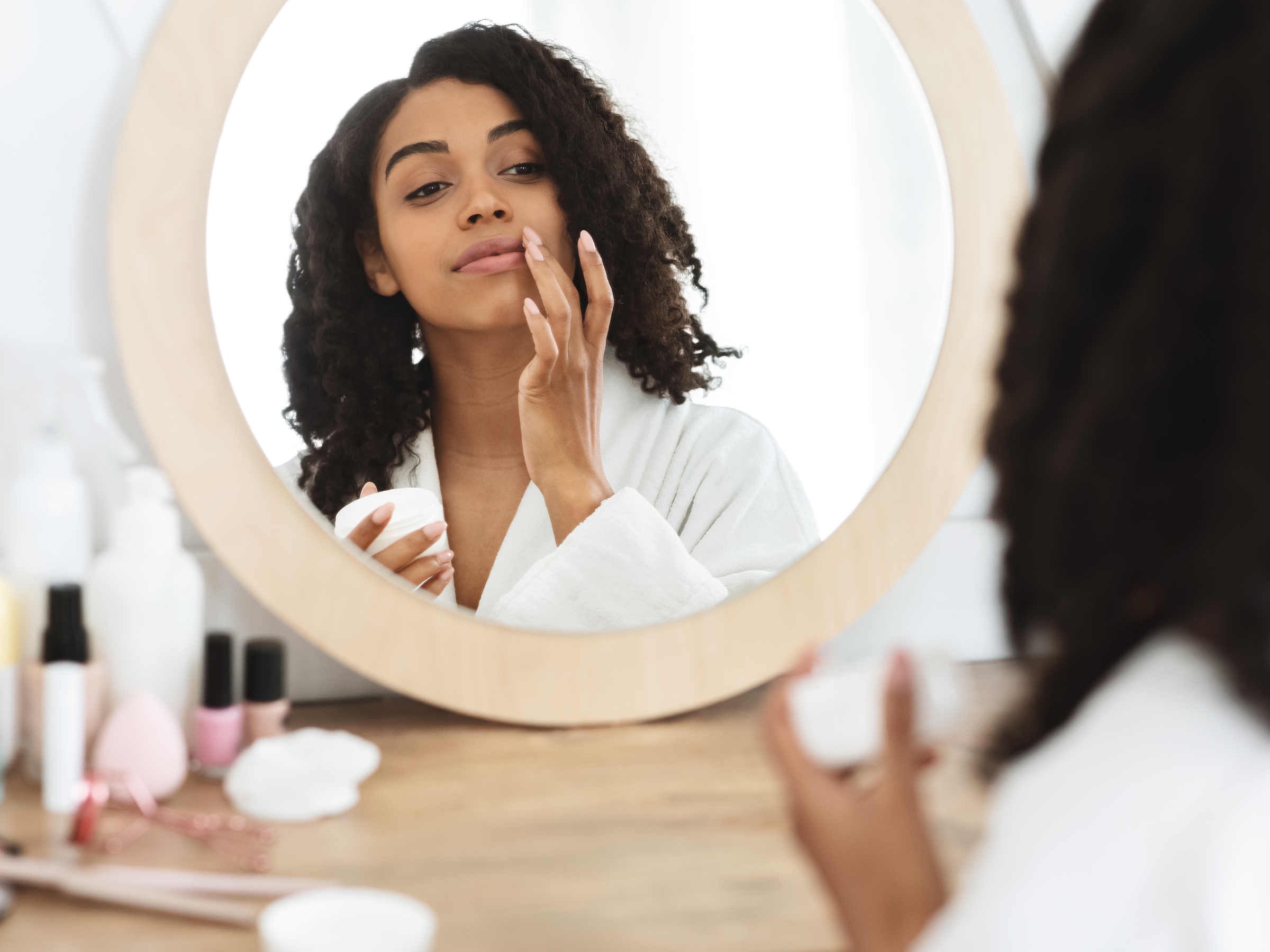Trend Report: How Consumers Feel About 7 New Beauty Trends
Trend report: How consumers feel about 7 new beauty and hair product trends
• • • • • •
Recently, Suzy teamed up with Exploding Topics to uncover seven key beauty trends and to learn how consumers feel about these products.
Keeping up with trends in beauty products, evaluating them, and understanding what consumers want and need is a huge task for brands. How can you know what products consumers want? What do they need from a product? And what beauty trends should brands start thinking about?
Recently, Suzy teamed up with Exploding Topics to uncover seven key beauty and hair trends and to learn how consumers feel about these products. Below, we’ll explore four skincare trends and three hair care and grooming trends, leaving you with some high-level takeaways for each category.
Let’s dive in!
Top Skincare Trends
Caffeine Sleeping Masks
Rich in antioxidants, skincare products with caffeine claim to help reduce wrinkles and fine lines. Caffeine sleeping masks treat the skin overnight, and often contain hyaluronic acid for additional hydrating benefits.
According to Exploding Topics, searches for “caffeine skincare” have increased by 6.1x over the last five years. In a recent Suzy survey, over half (58%) of respondents indicated an interest in beauty products with caffeine. Examples of trending caffeine-based skincare products include:
Scrubs that clean and smooth the skin
Serums to reduce eye puffiness and dark circles
Lotions to tighten the skin and make it look more youthful
Some consumers are already drinking in the trend, but over a third (33%) said they don’t currently use caffeine skincare products. That’s a big opportunity for beauty brands, especially since only 7% said they weren’t interested in buying skincare products with caffeine.
The top caffeine products consumers are interested in trying are facial moisturizers (58%), body lotions (55%), and face masks (49%).
Consumers want caffeine skincare products to brighten their skin (56%), reduce the appearance of wrinkles (52%), reduce the appearance of dark circles (48%), and decrease puffiness (48%).
Niacinamide
Searches for “niacinamide products” have increased by 42% in the last six months according to Exploding Topics. A form of Vitamin B-3, niacinamide is a popular ingredient in products for acne treatment. The ingredient has found its way into skincare products of all kinds, and has been increasingly used for anti-aging purposes, as it is said to minimize the look of pores and fine lines.
A solid number of consumers haven’t taken the niacinamide plunge. In a Suzy survey, 42% of respondents said they don’t use niacinamide products yet.
35% of consumers were interested in trying serums, but a larger portion of consumers primarily wanted to add niacinamide to their body care routine, with 42% interested in body lotions and 37% interested in body wash. For the face, consumers most wanted to try moisturizers (46%), cleansers (38%), and eye cream (36%).
They want niacinamide products to hydrate their skin (56%), improve skin texture (53%), and reduce the appearance of fine lines (47%).
Under Eye Patches
Approximately 15% of the US population now suffers from dry eye syndrome. To combat it, consumers are increasingly turning to eye therapeutics, like eye compressors, heated eye masks, and eye massagers.
Under-eye patches also fit under this category. These patches are a type of sheet mask designed to reduce under-eye circles and make the eyes look more rested. Search results are up 305% over the last five years on Exploding Topics and videos mentioning the product have over 290 million views on TikTok.
18% of consumers already use under-eye patches in their routines, and 35% are interested in using them. Of those that use them, 15% said they use them daily as part of their regular skincare routine. 14% said they use them once in a while, as a treat.
The top ingredients consumers are interested in seeing in an under-eye patch include Vitamin C (74%), collagen (71%), and retinol (62%).
The top results consumers want to see from under-eye patches include reducing under-eye circles (79%), decreasing puffiness (75%), and hydrating the skin (74%).
Blue Light Sunscreen
As consumers spend increasingly more time on screens, they’re looking for ways to protect themselves from blue light exposure. Blue light is the light from screens, including smartphones, computers, and televisions, that may impact our sleep cycles, eyesight, and more. Just over half (51%) of consumers indicated concern about how blue light was impacting them.
As anxiety over blue light grows, an increasing number of new products are launching that claim to offer blue light protection, like screen protectors, skincare products, and glasses.
43% of consumers don’t currently use any products to block blue light. Of those that do, glasses and screen protectors are the main tools they use. But nearly a third (29%) of consumers expressed interest in using skincare products to block blue light.
Of the options available, consumers are most interested in blue-light blocking facial moisturizers (76%), sunscreens (74%), and facial mists (54%).
Consumers primarily learn about blue light skincare products on social media. That’s largely thanks to the launch of influence skincare lines that focus on blue-light blocking products. For example, when Twitch Streamer Valkyrae launched, her product line went viral on TikTok with videos mentioning the products gathering over 750 million views on the platform.
Skincare Trend Takeaways:
Social media continues to be the main place where consumers learn about ingredients and skincare products.
Most consumers shop at beauty stores, big box stores, or Amazon for their skincare products.
The range they are most comfortable spending money on a skincare product is $16-$25.
Adding new ingredients into their skincare routines doesn’t mean consumers want to add an extra step. Instead of adding a special serum, consumers would prefer to see niacinamide, caffeine, and blue-light blocking ingredients in facial moisturizers, which 76% of consumers already use.
The majority of consumers are interested in subscription models for their beauty products, especially under-eye patches.
Top Hair Care and Grooming Trends
Scalp Hair Care Products
Most hair care products focus on the strands themselves, treating damage, offering moisture, or helping style the hair. But focus on the scalp itself is on the rise. Scalp cleansing videos on TikTok have over 1.6 billion views and searches for “scalp detox” have increased by 312% over the last 5 years.
Detoxing the scalp is a process of cleansing, moisturizing, and using other products, like serums, to deep clean and treat the scalp.
Nearly 30% of consumers are interested in scalp-care products. Within that category, consumers are interested primarily in shampoos (91%), scalp massagers (54%), pre-shampoo treatments (50%), and serums (46%).
The top concerns consumers want to treat with scalp-care products include dandruff/flakiness (60%), dryness (57%), and itchiness (50%).
Hair Styling Powder
55% of male consumers said that hair care and styling is part of their current grooming routine. Thanks to organic and paid social campaigns, hair styling powder is growing in popularity among men (videos mentioning the product have over 93 million views on TikTok). Adding texture and volume, this styling powder is popular among men with thinning hair.
Right now, 22% of male consumers said they don’t currently use hair styling products, but 16% said they were interested in trying hair styling powder in the future.
The results male consumers are trying to achieve with hair styling products include all day hold (16%), smoothing (14%), more volume/body (8%), and thicker hair (8%).
Adding styling products to their hair care routine is part of a larger trend towards male cosmetics. Searches for “men skincare routine” have grown by 630% in the last five years according to Exploding Topics, and the demand for male skincare and haircare products is expected to outpace shaving and fragrance products.
Beard Growth Kits
Beards are still in, and 43% of male consumers say that beard care is currently part of their grooming routine.
Currently, male consumers groom their beards with shaving products (71%), trimmers (49%), and combs/brushes (36%). But 22% of respondents were interested in adding beard growth products to their routines, and nearly half (43%) said they would be very interested in using a beard growth kit.
A beard growth kit typically contains various products with growth stimulants, including shampoos, oils, microneedling rollers, and more. Sometimes, they include grooming tools too. These products are nearly viral on TikTok, with over 379 million views.
Across the board, beard care products are expected to grow over the next few years. But beard growth products are predicted to grow about two times faster. Some of the trendiest beard growth products include:
Beard growth serums
Beard growth oil
Beard growth gummies
Male consumers were most willing to spend between $16 to $25 for a single beard growth product, and $26 to $50 for a beard growth kit. However, 22% of respondents indicated they would be willing to pay between $51 and $100 for a beard growth kit.
Hair Care and Grooming Trend Takeaways:
When it comes to hair and grooming products, consumers usually learn about them from everyday influencers like friends, family, and coworkers. Next, they used YouTube and social media, like Instagram and TikTok.
The majority of consumers prefer to shop for hair care and grooming products at big box stores.
Men prefer their hair styling products to be within the $1 to $15 range, but are willing to splurge on beard care products.
Last Words
Knowing what consumers expect and want from beauty and hair care products and the trends they’re interested in trying can help your brand stay ahead of the curve. While these high-level consumer insights can be helpful, it’s even better to directly survey your target consumers to learn what they want and need and how your brand can deliver it to them.
As an end-to-end consumer insights platform, Suzy helps marketing, insights, R&D and innovation teams make faster, consumer-centric decisions. From validating a new ingredient trend to developing new products, Suzy puts the voice of the consumer at your fingertips.
Exploding Topics helps investors and entrepreneurs find exploding trends before they take off by analyzing millions of searches, conversations and mentions across the internet.

